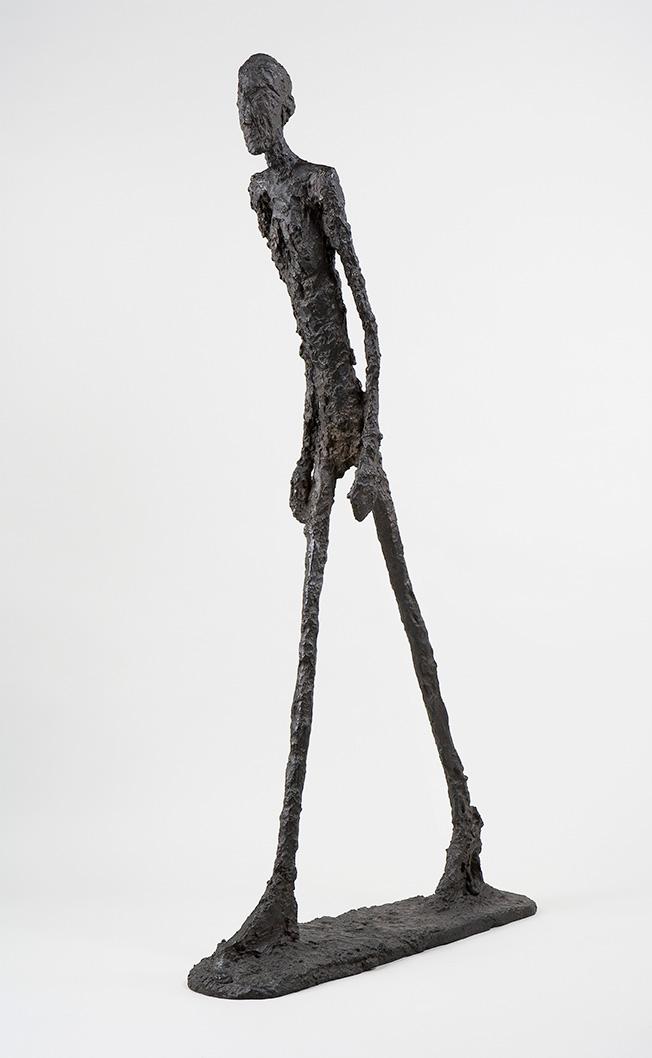
Alberto Giacometti was born in 1901 in the Swiss commune of Stampa in the family of the impressionist artist. At the beginning of his work in Paris, he created daring, surrealistic sculptures, playing up absurd ideas in simple forms. After a brief period of cubist experimentation, Giacometti returns to work with nature, achieving a unique body perception and philosophical depth. Before the outbreak of war, the occupation of France forced Alberto to leave for Switzerland, where he remained until the end of the bloody hostilities. During this time, the author created many large-scale works inspired by the horrors in real life. Giacometti explored the peculiarities of volume and space; his sculptures have topped lists of the most expensive in the world.
The sculpture ‘Walking Man’ was produced in 1961 and reached 183 cm. Cast in bronze, it depicts a solitary man in a half-step with his arms open. The outward appearance is indicated minimally — a thin, fragile, and elongated figure. The image is symbolic: it calls to return to the problems of a simple, vulnerable man. The work’s distinctive feature is the figure’s enormous feet, which stand out significantly against the background of the lean body. The essence of the sculpture is that despite all difficulties, the man can move on. Standing securely on the ground, he is not afraid to pursue goals.
At first glance, the sculpture seemed terrifying to me, mainly because of its skeletal form. However, looking closely, other significant details began to attract attention. The graceful shape seems to reflect the fragility of the soul, loneliness, and anxiety. Additionally, the features of the figure’s face — pointed, with a piercing gaze, inspire hope for realizing all intentions. The sculpture looks unique, fascinating, and accurately conveys its purpose.
Works Cited
Giacometti, Alberto. Walking Man. 1960. The Guggenheim Museums and Foundation, New York. Guggenheim Bilbao Museoa. Web.